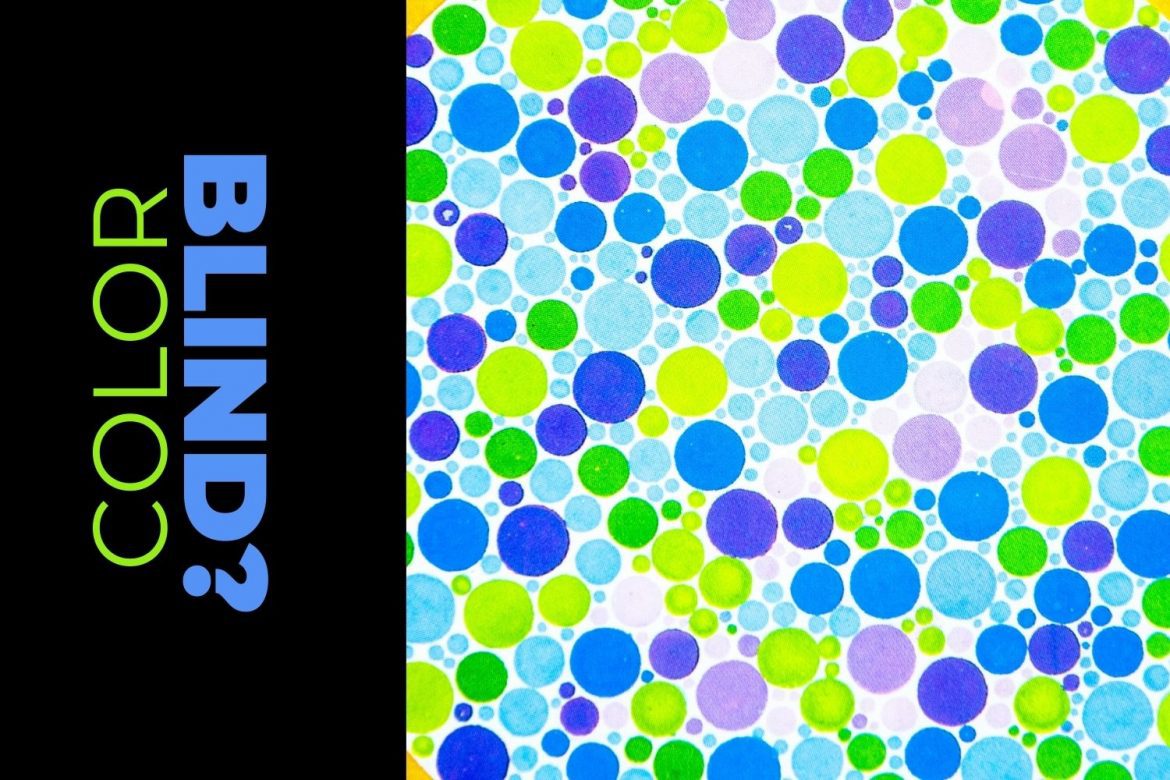
“Color blind” doesn’t necessarily mean you only see shades of gray. In fact, it is extremely rare to be truly color blind (that is, you see only black and white).
For this reason, “color vision deficiency” (CVD) is a more accurate term. To have CVC means colors are visible but in different shades and intensities than normal.
It’s estimated around 300 million people worldwide suffer from CVD (approximately 8% of men and 0.5% of women).
How do you see color?
It is difficult to know with 100% accuracy what your world would look like if you had a CVD. Even if you perceive something as red, it may not be the same hue and intensity as the red others see.
When the lens inside your eye focuses wavelengths of light/color on the retina, a signal is sent to your brain. In your retina, you have millions of cells called photoreceptors. There are two types of photoreceptors: cones and rods.
- Cones
Cones control your color vision. There are several different pigments present in cone cells called photopigments. The photopigments react to different incoming wavelengths of light/color and send signals to the brain.
If all photopigments are present in your cones you will see every color in the spectrum. If you are missing a photopigment you will see a diminished color spectrum. - Rods
Rods only have one kind of pigment that reacts the same way to all different light wavelengths. Rods do not contribute to your color vision. But they are very sensitive to light and assist with your night vision.
How do you become color blind?
CVD is usually genetic. If you have a relative that is color blind there is a chance you or someone else in your family will inherit the gene.
The inability to distinguish between red and green is the most common form of CVD. Less commonly, those with CVD struggle to distinguish between blue and yellow.
A closer look at inheritance
Almost all CVD is inherited. However, certain diseases can increase your risk of acquiring CVD:
- Glaucoma
- Diabetes
- Chronic alcoholism
- Leukemia
- Alzheimer’s disease
- Parkinson’s disease
- Macular degeneration
Specific drugs may also increase your risk of acquired CVD. An example is Hydroxychloroquine (Plaquenil), used to treat rheumatoid arthritis.
Two types of color blindness
Red-green color blindness
Red-green color blindness (R-G CB) occurs when the red or green photopigments in your cone receptors don’t work properly. R-G CB is more commonly found in men. The gene that causes R-G CB is located in the X chromosome. Males have one X chromosome and females have two. In females, the stronger X chromosome is usually dominant and normal color perception is maintained.
Blue-yellow color blindness
Blue-yellow color blindness (B-Y CB) occurs when there is a problem with the blue or yellow photopigment receptors. It’s extremely rare—making up only 5% of color vision deficiencies. The chance of having B-Y CB is equally likely in men and women. The affected gene, on chromosome 7, is shared equally by men and women.
Symptoms of color vision deficiency
The symptoms of color deficiency vary. In mild cases, you may not be aware you are color blind. Because in most cases you are born with the deficiency, the colors you see appear normal.
Symptoms include:
- Trouble seeing colors
- Colors do not appear as bright
- Inability to distinguish certain shades of the same or similar colors
Diagnosing color vision deficiency
Your eye doctor uses a simple assessment to diagnose CVD, called the Ishihara test. The test consists of a series of colored plates with numbers and patterns you are asked to identify. If you have a color deficiency you will not be able to see all the numbers and patterns.
Living with a color vision deficiency
Most people who have a CVD have adapted to their unique color spectrum. Although certain levels of color vision are a requirement for some occupations including police, pilot and electrician. Other challenges include:
- Some countries will not allow color blind people to obtain a driver’s license.
- Traffic lights pose a problem; the green may appear white or blue, and the red and yellow seem similar. CVD drivers often rely on the position of the illuminated light rather than the color.
Treatment for color blindness
There is currently no treatment for inherited CVD. Special contact lenses and glasses may help with some color vision deficiencies. For acquired deficiencies, your eye doctor will address the underlying disease or drug that is causing the issue.
Color vision is routinely assessed at your comprehensive eye examination. However, if you notice a sudden change in your color vision you should make an appointment with your eye doctor.

